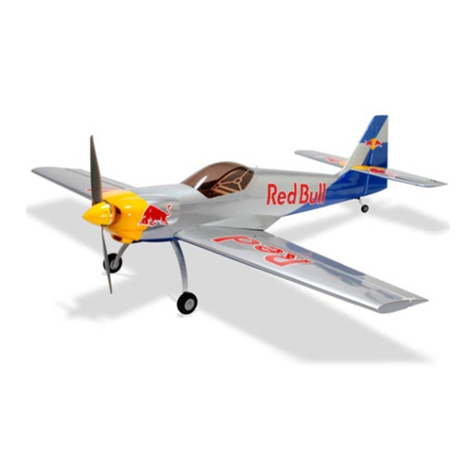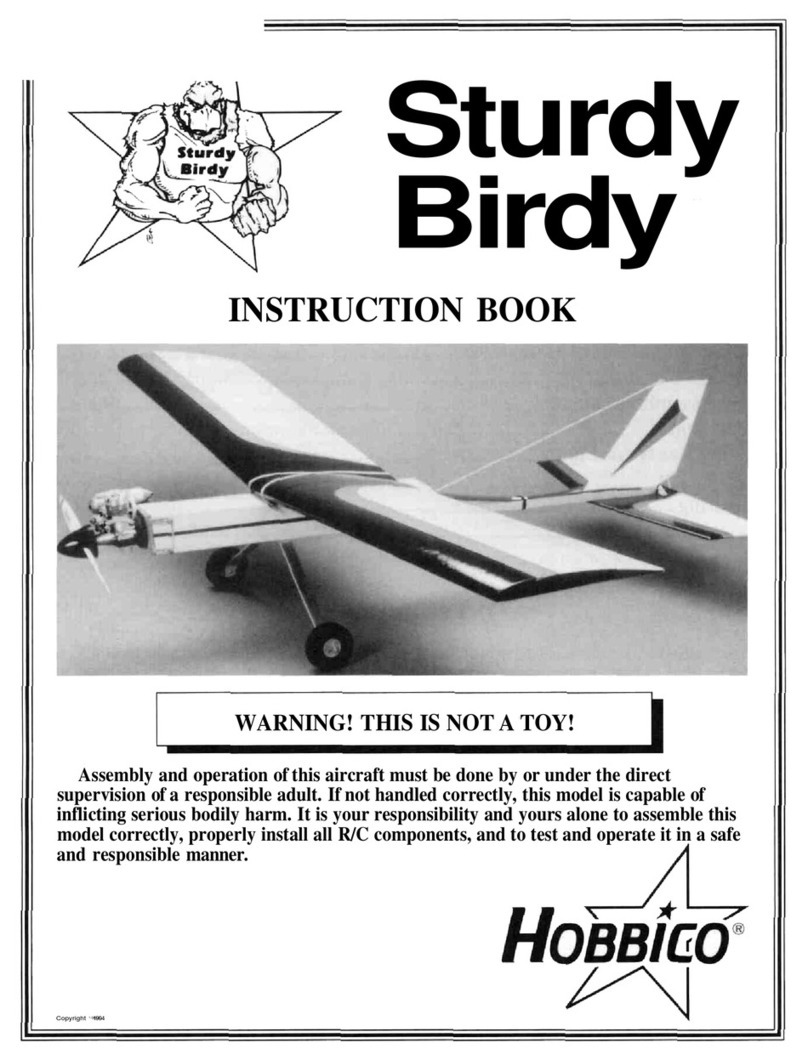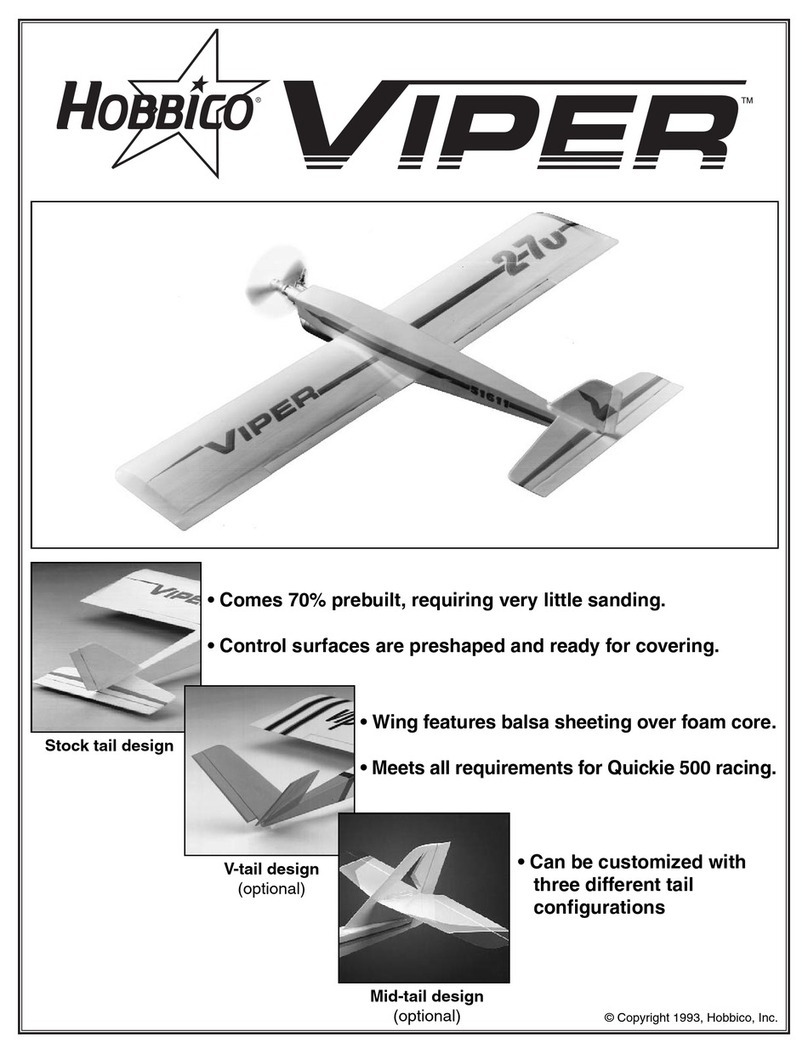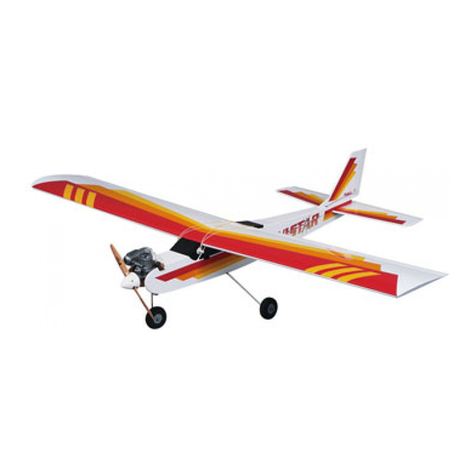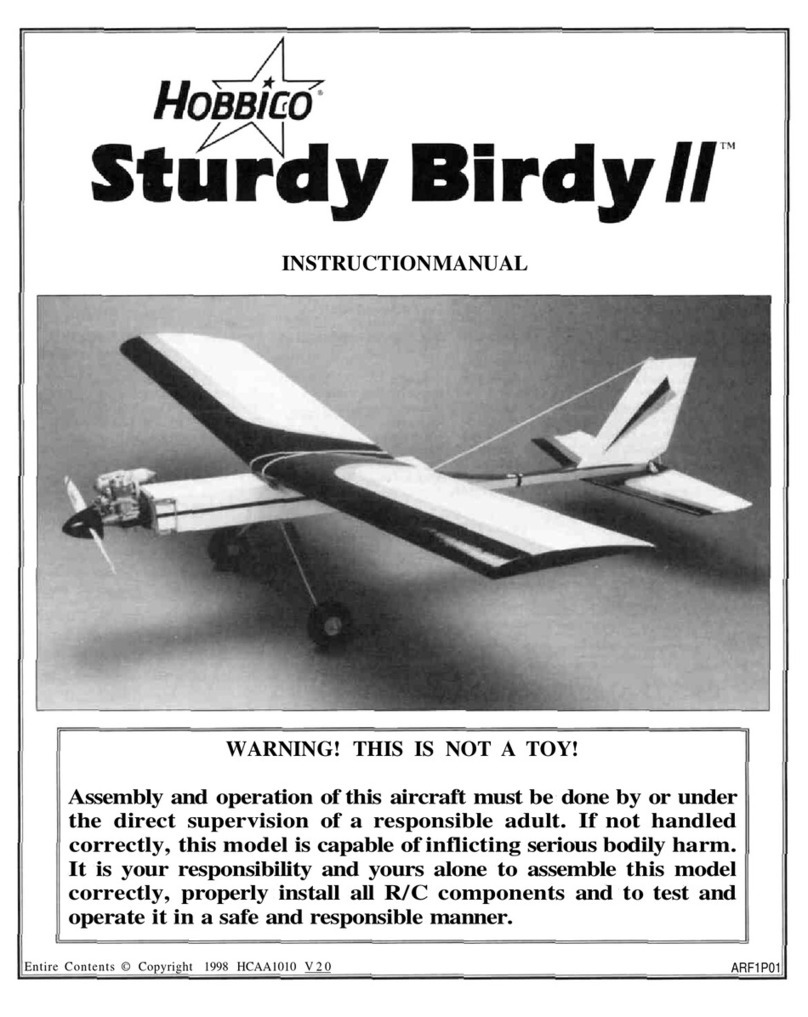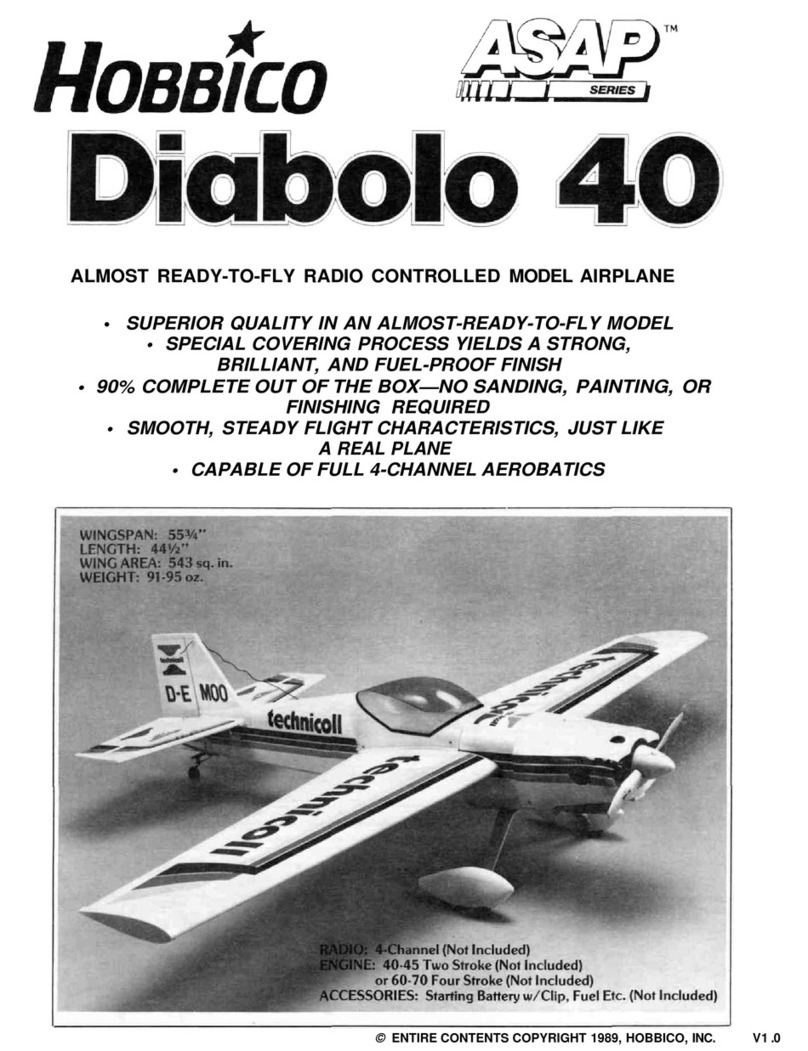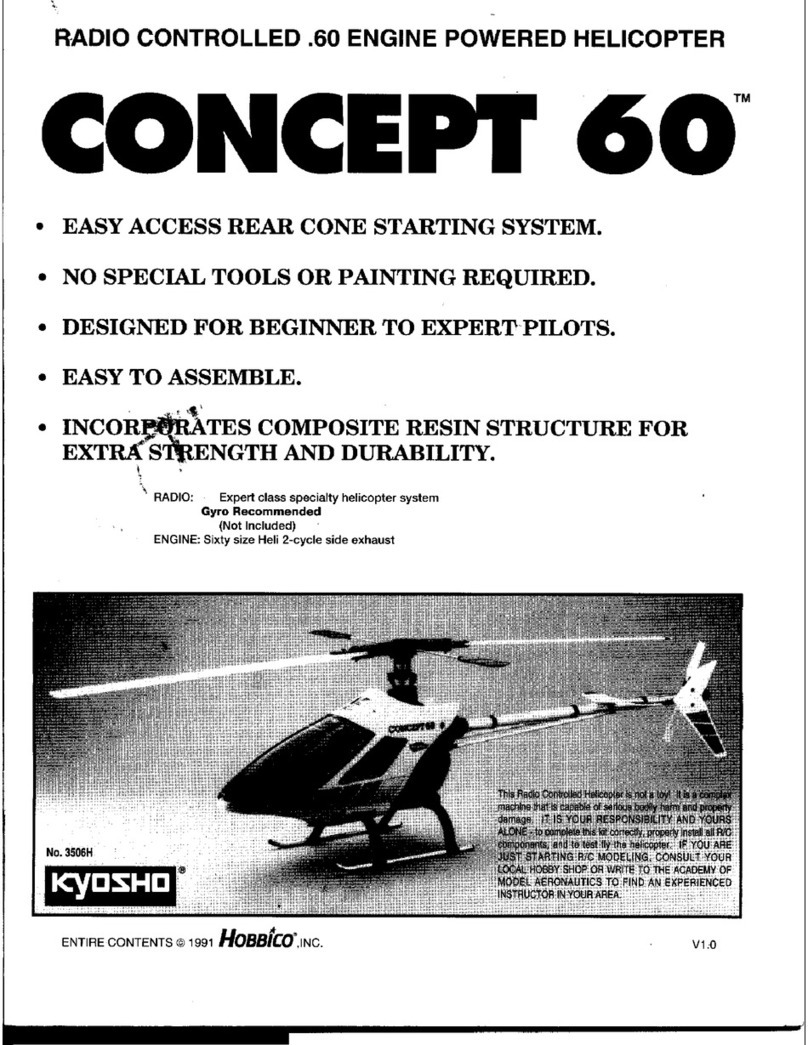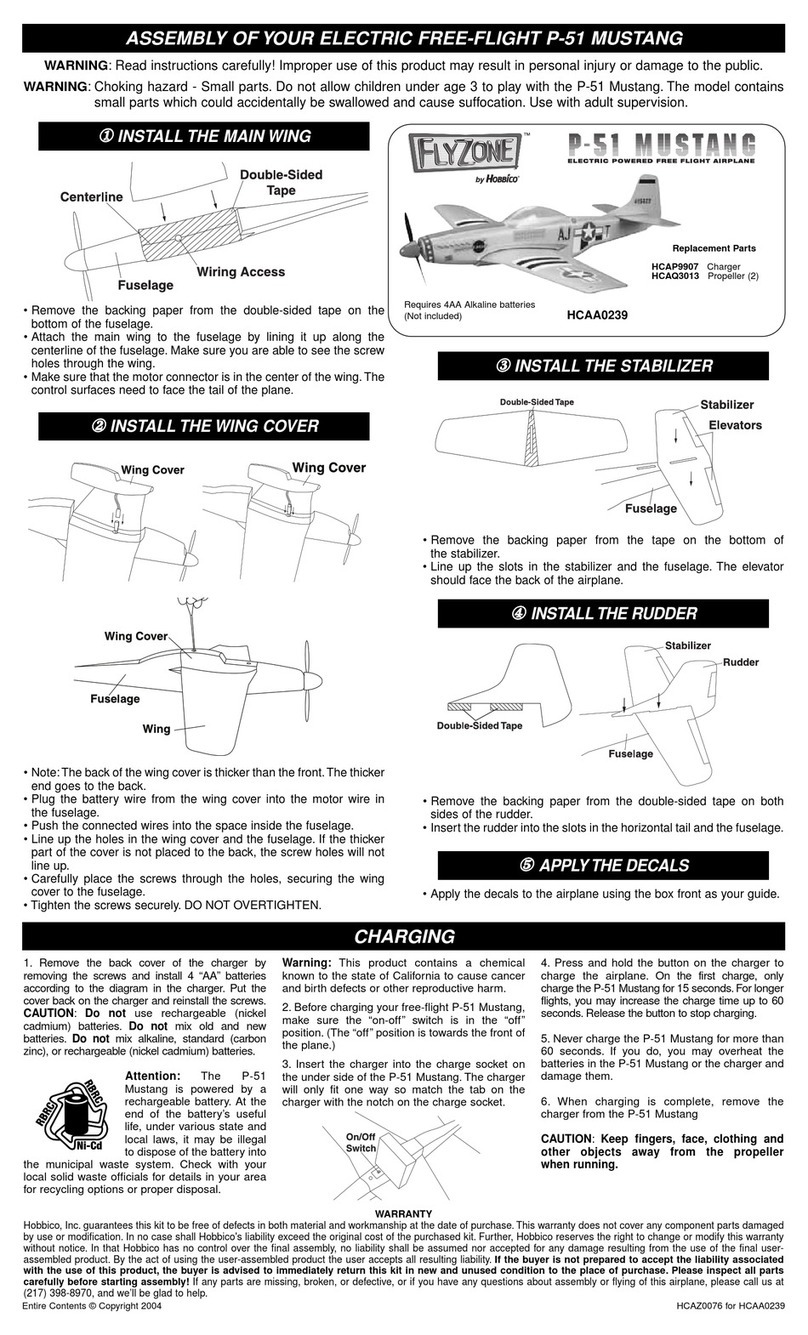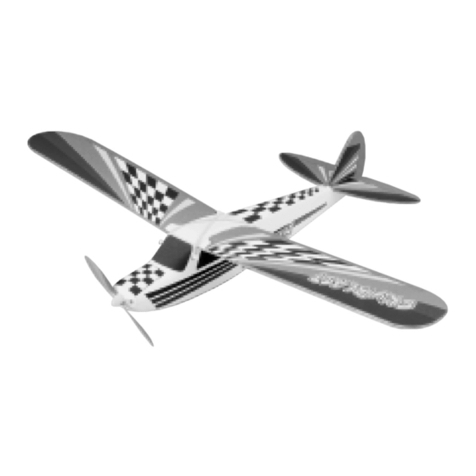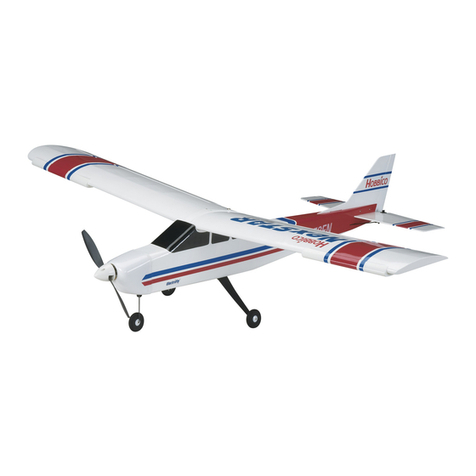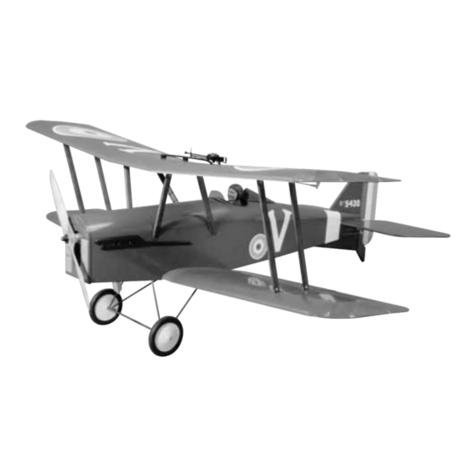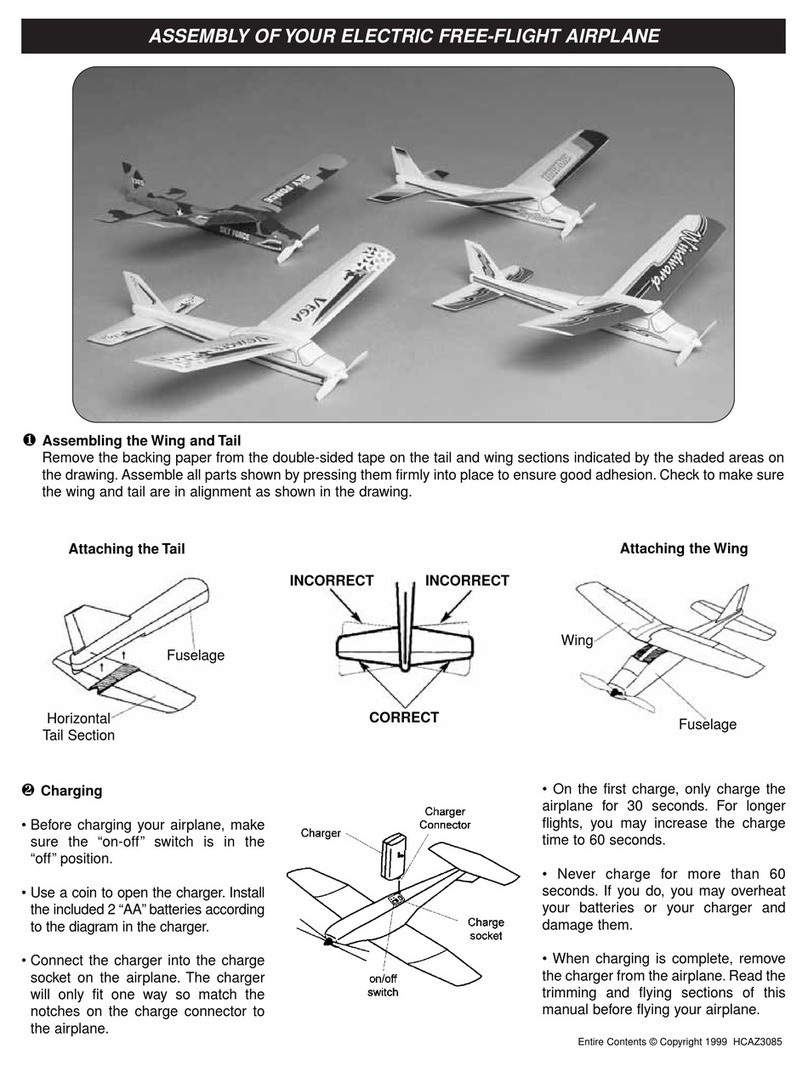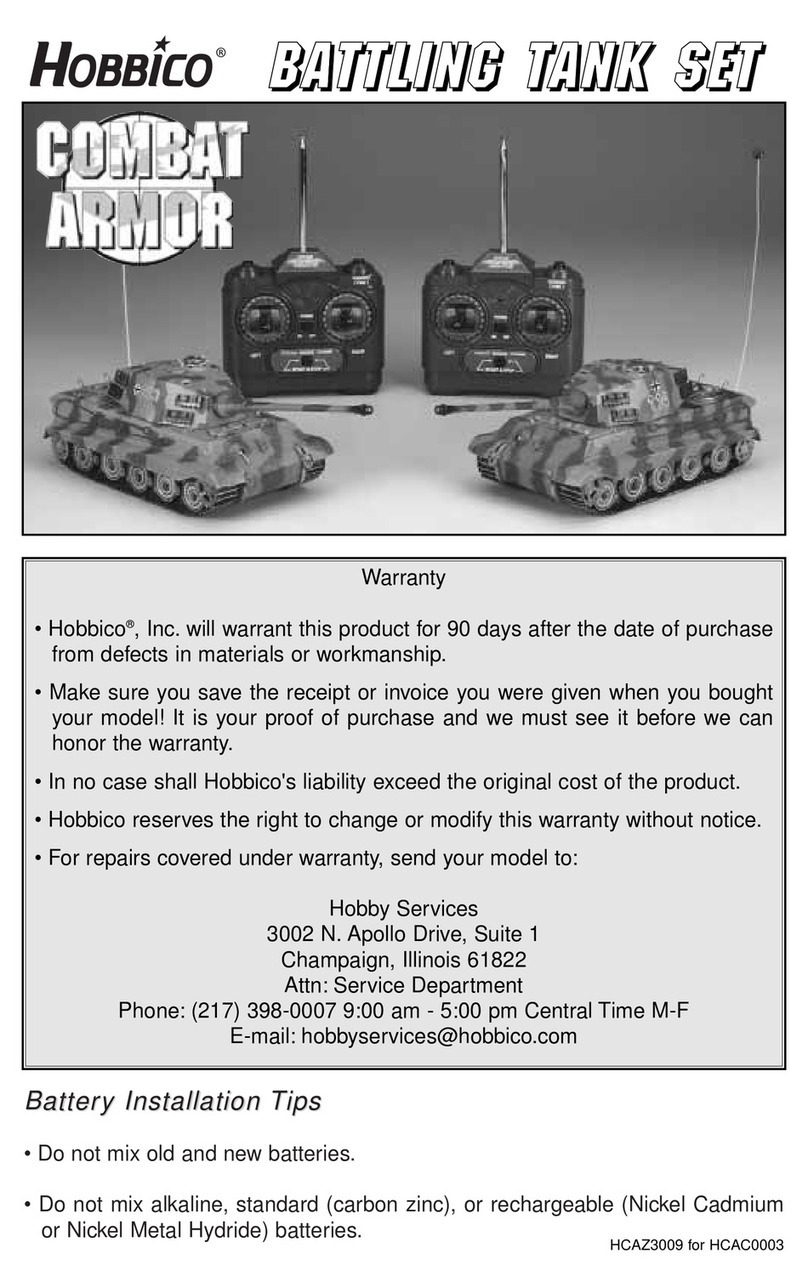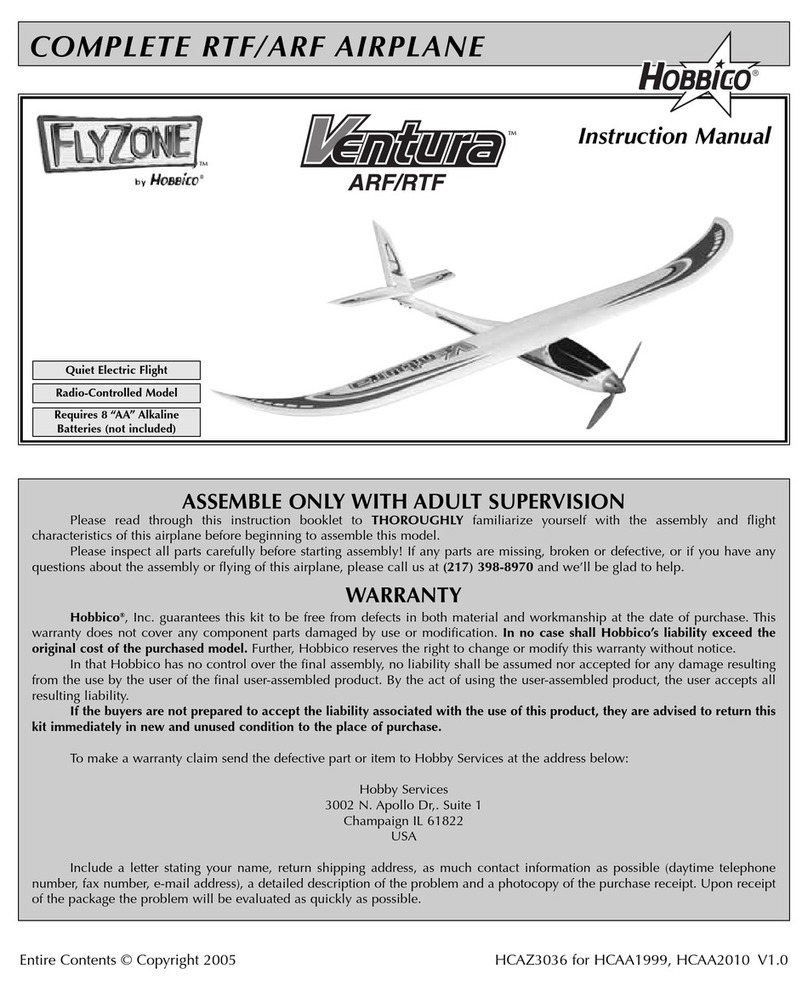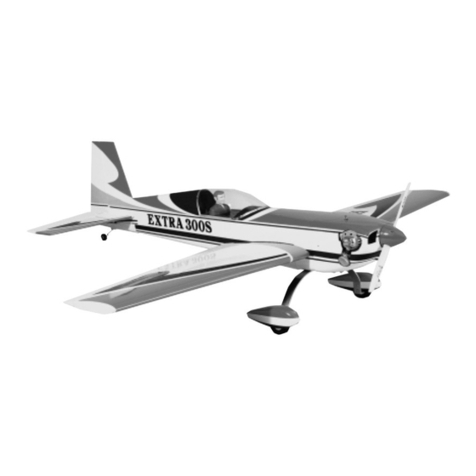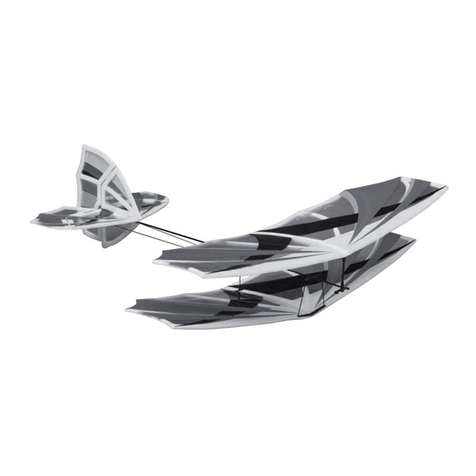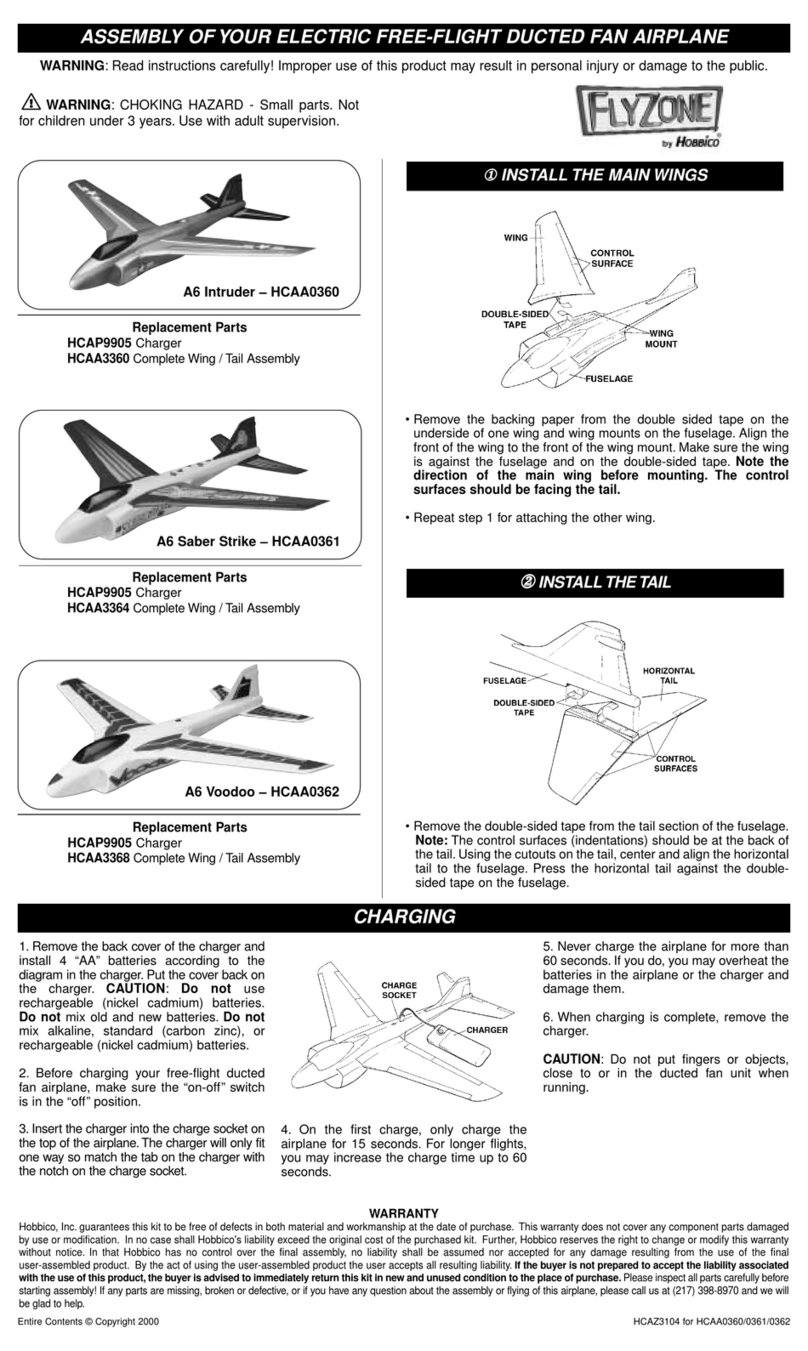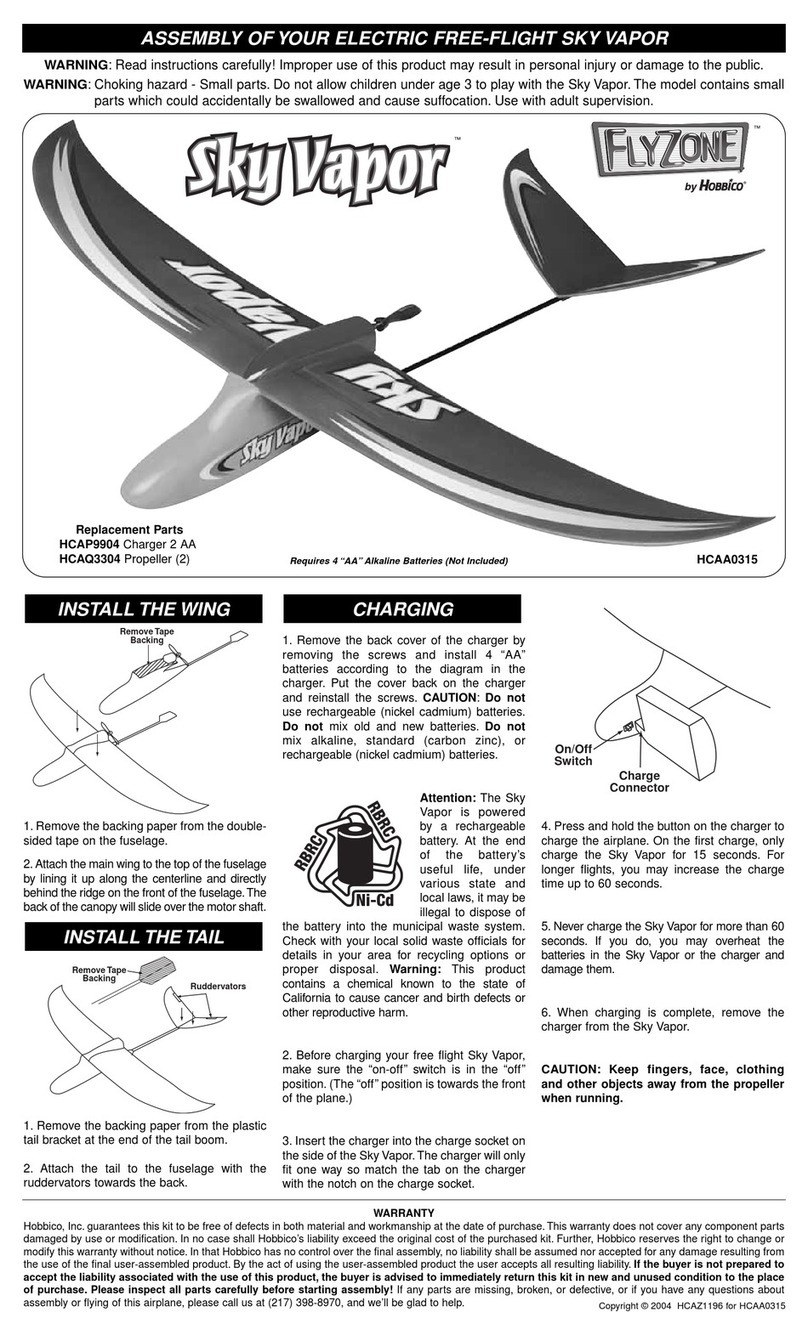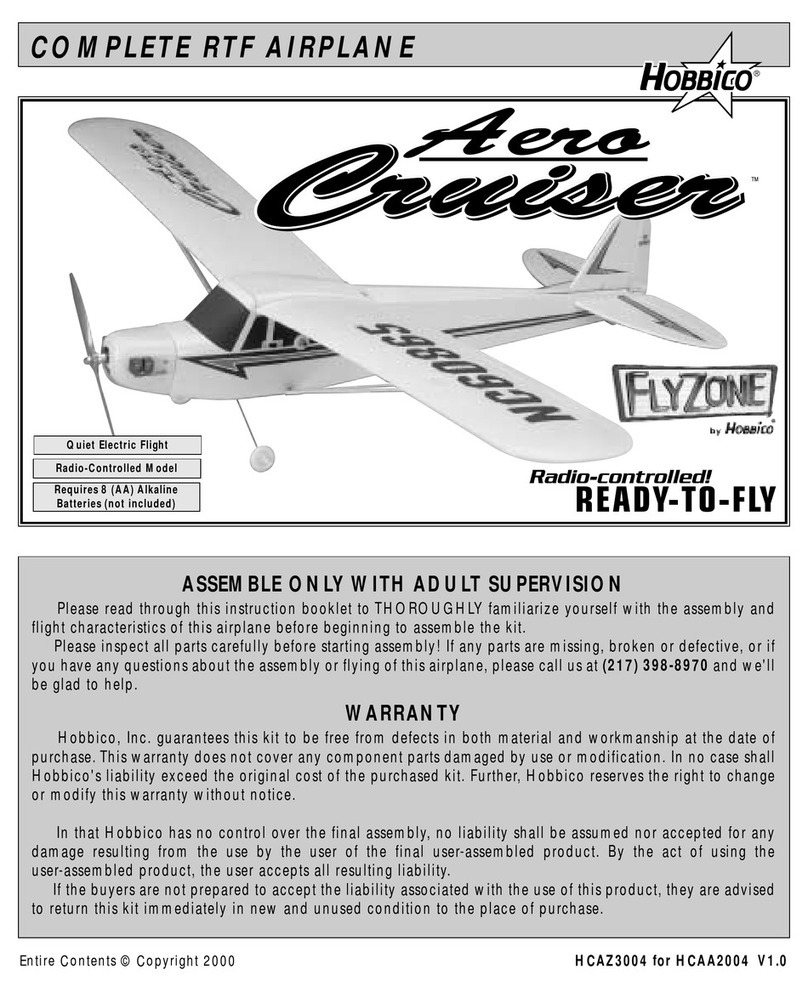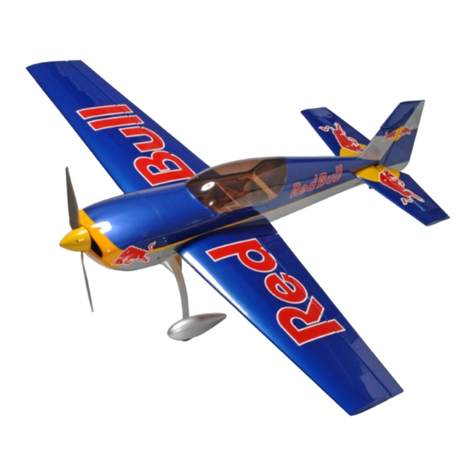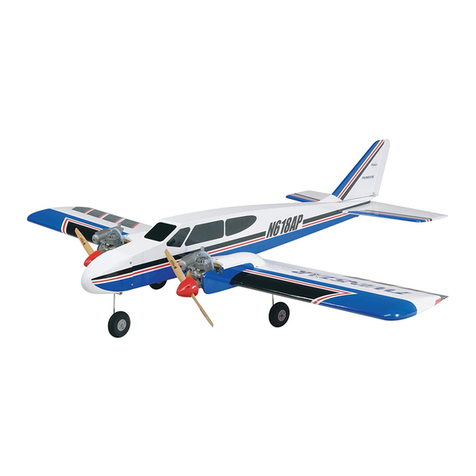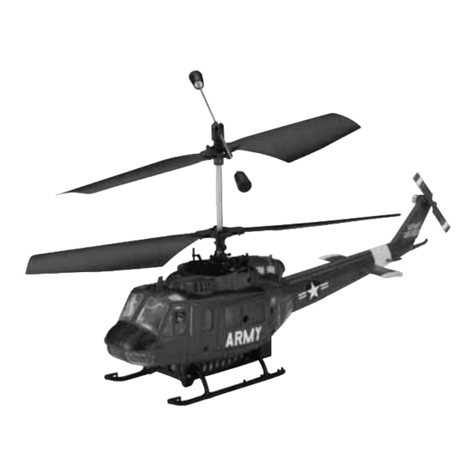The sail on the Skysailer is angled up slightly. When the
motor turns the propeller, thrust is created and the
Skysailer will climb. When the motor is shut off, the
Skysailer will start to glide and descend gradually.
Moving the right stick to the right will tip the sail to
the right, causing the hang glider to turn to the right.
Moving the right stick to the left will tip the sail to the
left, causing the hang glider to turn to the left.
It is best to fly on calm days, at least for your first few
flights, when there’s little or no wind. Also, find an
area clear of trees, power lines and other structures.
A flying field for R/C planes is best. Don’t fly around
groups of people, especially children, or within 6
miles of existing R/C flying fields.
1. Find an open area free of buildings, trees, power
lines and people.
2. For your first few flights, fly only when the wind is
calm. After you are comfortable with the hang glider,
you can fly in winds that are no more than 10 miles
per hour. If flown in stronger winds, the hang glider
may be blown downwind and not have enough
power to get back to you.
3. Make sure the battery pack is fully charged and that
the transmitter has fresh “AA” batteries installed.
4. If others are flying in the same area, make sure
that they are not using the same channel radio system
you are. Inside the battery hatch of your transmitter
there is a crystal with a number on it (for example
CH. 16 72.110). This is the channel and frequency
you are using. If someone is on the same frequency,
DO NOT switch on your transmitter until they are
done flying.
5. Range check your radio before each flight. Switch
on the transmitter, plug the motor battery into the
Skysailer and then switch it on. Have a helper hold
the hang glider. With the antenna collapsed, walk 50
feet away from the Skysailer. Move both control
sticks, checking that the motor runs and turns off and
the sail tips following the control stick movement. If
you still have control over the Skysailer, it is safe to
extend the antenna and fly the hang glider. If you do
not have control of the Skysailer, make sure the
batteries in the transmitter are fresh and the battery in
the Skysailer is charged. Also, make sure the wire
antenna is extending out along the center of the sail.
6. Recheck that when the right stick is moved to the
right, the sail tips to the right. When the stick is
moved to the left, the sail must tip to the left.
If you have never flown an R/C airplane before, we
recommend that you get help from an experienced
R/C pilot. Most R/C clubs have training programs that
will help you learn to fly quickly. If you cannot find an
experienced pilot to help you learn, the following will
help you get your hang glider into the air.
1. Always make small control movements. The hang
glider is very stable. By making small control
movements, if you make the wrong control input,
you will have time to apply the correct movement.
2. Always take-off and land into the wing. This will
help slow the hang glider down and make it easier to
land.
3. When the Skysailer is coming toward you, moving
the right stick left still causes the plane to turn left,
but it appears to turn to your right. In short, you have
to reverse the way you control the right stick. A good
way to familiarize yourself with the controls when
the Skysailer is coming toward you, is to turn your
body so that you are facing the same direction the
hang glider is going, looking over your shoulder at it.
Now when you move the right stick left the Skysailer
will go to your left.
4. If you get confused while flying, release the sticks
and the Skysailer will straighten out if it has enough
altitude. This will allow you to regain control.
FLYING THE SKYSAILER
PREPARE FOR TAKEOFF
CHOOSE A GOOD FLYING SITE
HOW DOESTHE SKYSAILER WORK
7
